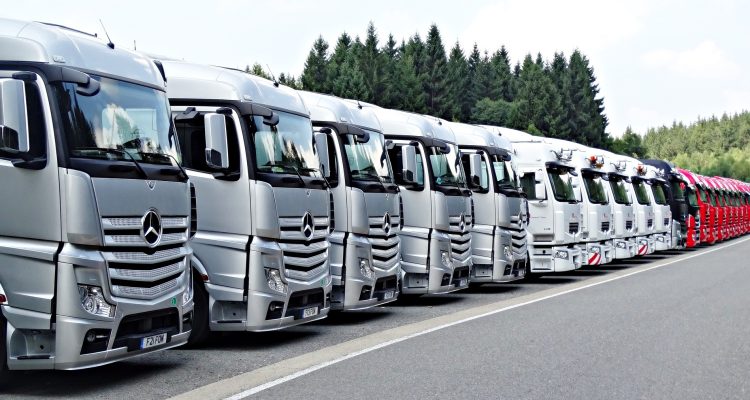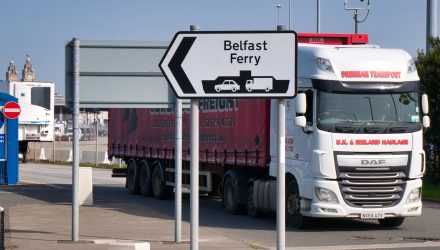Vehicles, like many aspects of modern life, are becoming smarter and more connected. With telematics solutions, fleet operators can now monitor and manage vehicles remotely by collecting real-time data on aspects like vehicle performance, driver behaviour and overall operational efficiency.
Yet adoption remains limited. Today, just 19% of UK companies use telematics in their fleet operations, although 44% plan to give it more attention in the next few years.[i] This indicates huge potential for the development of the market, with analysts estimating annual growth of over 18% in the next five years[ii]. In this article, we explore three key drivers of interest in telematics technology and how specialised finance can support its adoption.
- Strengthening safety
One of the biggest safety risks in fleets is fatigue-related accidents, despite legal limits on working hours.[iii] A telematics system with real-time GPS tracking can flag when a driver is approaching their limit, and send alerts to fleet managers, who can in turn send assistance to the right location quickly.[iv]
Telematics systems also generate reports on vehicle use, a valuable asset during audits or compliance checks.[v] By identifying risky or inefficient driving practices and sending proactive maintenance alerts, technologies like dashcams and behavioural tracking reduce the need for vehicle maintenance and accident repair, and lower insurance premiums.[vi]
- Cutting car emissions
In addition to driver safety, UK fleet operators must commit to reducing their carbon footprint – and fast. To start with, the UK Government’s Zero Emission Vehicle Mandate requires a complete phase-out of sales of petrol and diesel cars and vans by 2035.[vii]
Telematics has already proven itself a vital tool in emissions reduction. Firstly, telematics systems enable live emissions monitoring and route adjustments, helping fleets improve efficiency. Some early adopters have already decreased their emissions in this way, by over 50%[viii].
Secondly, drivers can be incentivised to further support emissions targets, through scorecards for example. Performance evaluations based on telematics-generated data can reward safe and fuel-efficient driving behaviour, which in turn improves profitability.
- Future-proofing fleets
According to the Automated Vehicles (AV) Act of 2024, self-driving vehicles could start roaming UK roads by 2026. Advanced Driver Assistance Systems (ADAS) technology is already being implemented widely.[ix] In fact, the European Union is making ADAS technologies mandatory for all new vehicles[x] and it is likely that the UK will follow the trend in the near future[xi]. These systems enhance safety by helping drivers avoid common errors such as lane departures or collisions, but they also work in tandem with telematics to create smarter, more efficient fleets.
Looking ahead, the intersection of ADAS, telematics, and emerging technologies like Vehicle-to-Everything (V2X) will help drive the development of smart city systems. V2X allows vehicles to communicate with one another as well as with traffic lights and infrastructure. Governments around the world are already exploring this technology, and full adoption promises to revolutionise road safety[xii], traffic flow, and overall fleet efficiency.
Accelerating telematics adoption
Despite the clear advantages of telematics implementation, the initial investment can be a significant barrier. An expert, knowledgeable financing partner can help make these technologies affordable – allowing savvy companies to join early adopters and start reaping the benefits ahead of slower competitors.
Flexible financing solutions for telematics allow fleet operators to enjoy the benefits of the technology without the burden of upfront costs. By aligning instalments with the savings generated through telematics (such as reduced fuel consumption and maintenance costs), companies can protect cash flows while securing long-term operational efficiency.
For telematics vendors, offering financing as part of their product solutions helps address potential cost concerns right away and makes adoption more accessible for customers. In this way, smart finance is key to unlocking the full potential of telematics, allowing both fleet managers and vendors to embrace the technological revolution unfolding in the automotive sector.
Author: Kathryn Vassilissin, Sales Manager, Vendor Finance, Siemens Financial Services (SFS)
[ii] http://mobilityforesights.com/product/uk-vehicle-telematics-market
[iv] https://gomotive.com/blog/benefits-of-telematics-in-fleet-management/
[v] https://satmo.co.uk/latest/blog-vehicle-tracking-uk-regulations-compliance-2025/
[vi] https://www.businesscar.co.uk/news/data-shows-benefits-of-grosvenor-diagnostic-tool/
[viii] https://www.fleetnews.co.uk/news/vertas-cuts-carbon-emissions-and-saves-318k-with-telematics
[ix] https://www.statista.com/outlook/tmo/internet-of-things/automotive-iot/worldwide
[xi] https://www.pacts.org.uk/pacts-expertise-general-safety-regulation/
[xii]https://www.nhtsa.gov/sites/nhtsa.gov/files/documents/v2v_pria_12-12-16_clean.pdf






